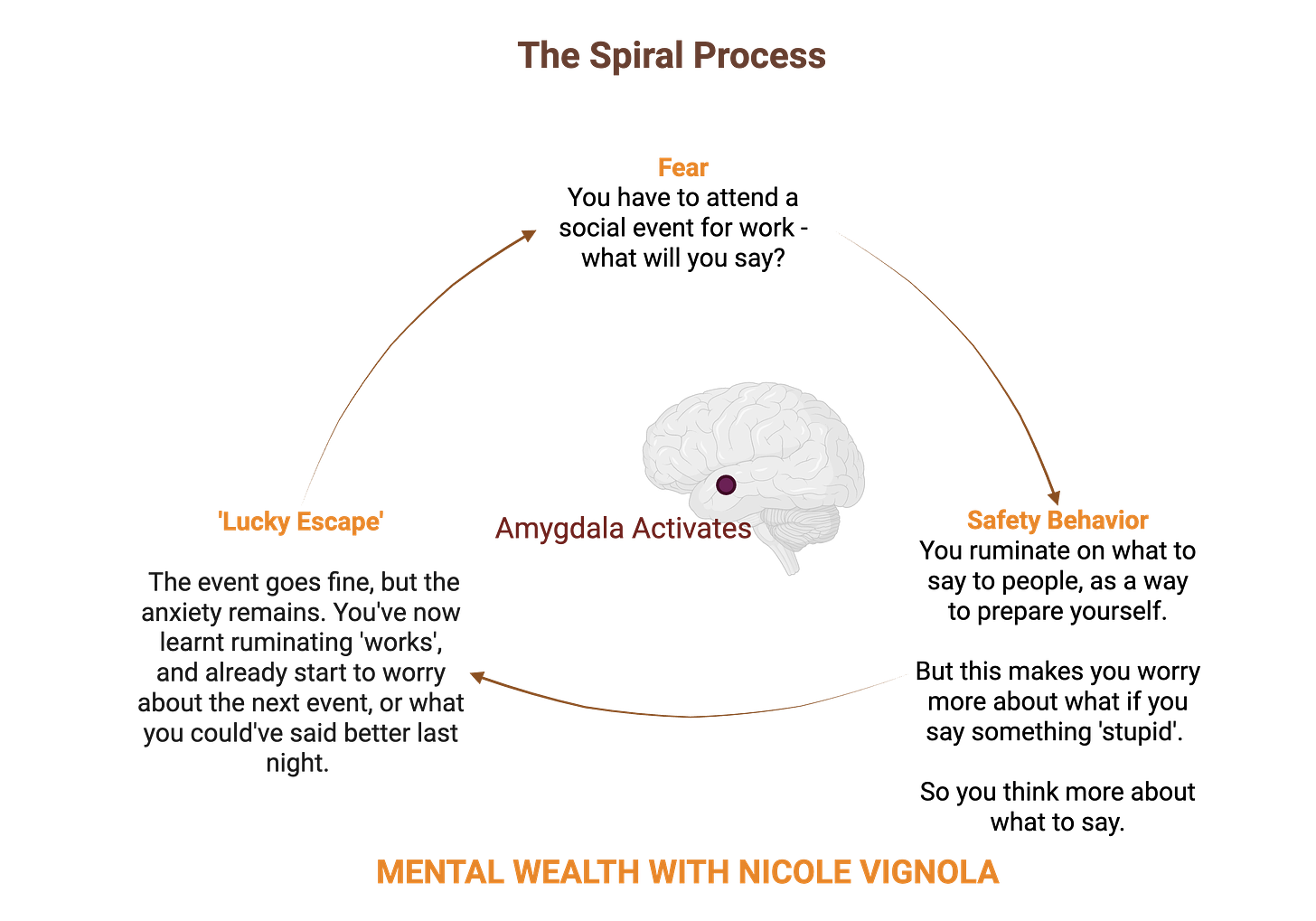How to Stop Spiraling
Hey Currency Collective!
This week we’re going into the neuroscience of the spiral.
How to Stop Spiralling:
First, let’s talk about what spiralling is.
This is generally an anxiety-driven process where you continually think about an issue that you fear/are Ûanxious about/are stressed about, coming to no resolution. And because spiraling is driven by fear (from a brain area called the amygdala), you’re not really looking for a solution either. The rational, problem-solving part of the brain (the frontal cortex) isn’t engaged (1). Spiraling can masquerade as a helpful process - ‘thinking things through’- whereas it’s really a cycle that’s perpetuating the anxiety. The thoughts start to be less grounded, and more ‘what if’ based.
Now I’m not saying it’s bad to think things through. But the thinking needs to be rational, solution-driven, with the frontal cortex engaged. Thinking about things can only be so helpful. Eventually, you need to take action to find an answer.
If you want my top tip to shift from amygdala-based spiraling to frontal-based problem solving, check out my newest YouTube video:
Other Important Ways to Stop Spiraling:
The first thing to do is notice that you’re spiralling
Then question it. When you’re spiraling, your amygdala is running the show. The amygdala is a super beneficial part of the brain which alerts us to danger and tries to keep us alive. But, when we’re going down a thought spiral, it isn’t life-or-death, and the amygdala’s activation is actually perpetuating a cycle of stress and anxiety. Questioning the line of thought brings in the frontal cortex, which is the rational centre of the brain. The rational centre will bring us out of the spiral (2).
Questions like, is this a true thought? Is this a helpful thought? Is there any evidence to support this line of thinking? (3)
Using pen and paper to write down these questions/line of thinking can also be helpful because it forces us out of our head and into the real world.
If you feel like you’re noticing it, but can’t stop the thoughts with questions, take a deep breath. There’s top-down regulation (thinking to yourself, I need to stop this, and then stopping it), and bottom up-regulation (helping your body to stop the thinking by controlling breathing). And bottom-up regulation can be a lot easier if you’ve never practiced top-down regulation before. The two together are an ideal combination (4).
Get outside and look at an open space. This helps to calm the amygdala and other stress/fear centres in the brain. It is likely this comes from an evolutionary need to want to see that there’s no predators around us, but it still works. Bonus point if the outside space is green, because our brains find green de-stressing (5).
Call ONE (1!) trusted friend or family member. Someone you know will think rationally. And we’re only calling one, because calling multiple people and getting lots of different opinions/ideas is a form of spiraling. Other people have a way of viewing a situation that’s not theirs in a more rational light, so getting their opinion can help you understand the reality that someone else sees.
Until Next Week,
Nic x
P.S. Creating distance between the thoughts can be a great starting point - if you notice you start spiraling, even just distracting yourself from the thought for 5-10 seconds is a win. The next time, you can distract for 10-15 seconds. And slowly you build space to engage the frontal cortex before the amygdala goes into overdrive.
References
1. https://www.jneurosci.org/content/35/15/6020
2. https://pmc.ncbi.nlm.nih.gov/articles/PMC2566753/
3. https://pmc.ncbi.nlm.nih.gov/articles/PMC8475916/
4. https://www.lumohealth.care/blog/the-surprising-mental-health-benefits-of-breathing
5. https://evidence.nihr.ac.uk/alert/local-green-spaces-are-linked-with-better-mental-health/


